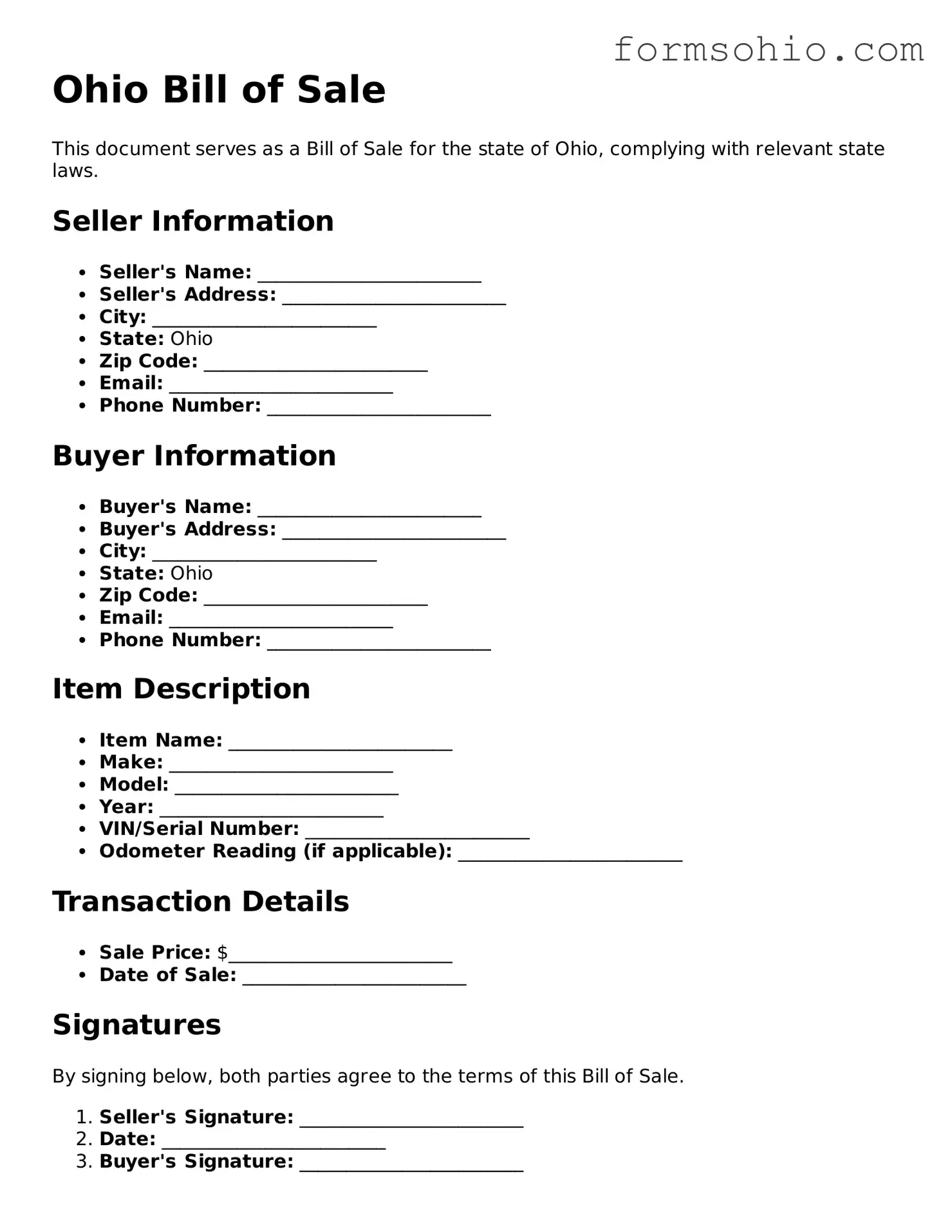When filling out the Ohio Bill of Sale form, individuals often overlook crucial details that can lead to complications later. One common mistake is failing to include all necessary information about the item being sold. This includes the make, model, year, and Vehicle Identification Number (VIN) for vehicles. Omitting any of these details can create confusion and disputes about ownership.
Another frequent error is neglecting to provide accurate seller and buyer information. Both parties should ensure their names, addresses, and contact details are correct. Inaccuracies can hinder communication and may lead to legal issues down the line.
People sometimes forget to sign the document. A Bill of Sale is not valid without the signatures of both the seller and the buyer. This step is essential to confirm that both parties agree to the terms of the sale.
Moreover, many individuals fail to date the Bill of Sale. Including the date is vital as it establishes when the transaction took place. Without this information, it can be challenging to prove when ownership was transferred.
Another mistake is not keeping a copy of the completed Bill of Sale. Both parties should retain a copy for their records. This document serves as proof of the transaction and can be important for future reference.
Some people overlook the importance of payment details. Clearly stating the amount paid and the method of payment can prevent misunderstandings. If the payment terms are vague, disputes may arise later.
Additionally, individuals often forget to check for any local requirements regarding the Bill of Sale. Some counties or municipalities may have specific regulations that must be followed. Ignoring these can lead to fines or other legal repercussions.
Finally, not seeking legal advice when necessary can be a significant oversight. If the transaction involves a high-value item or complex circumstances, consulting with a legal professional can provide clarity and ensure that all aspects of the sale are properly addressed.
